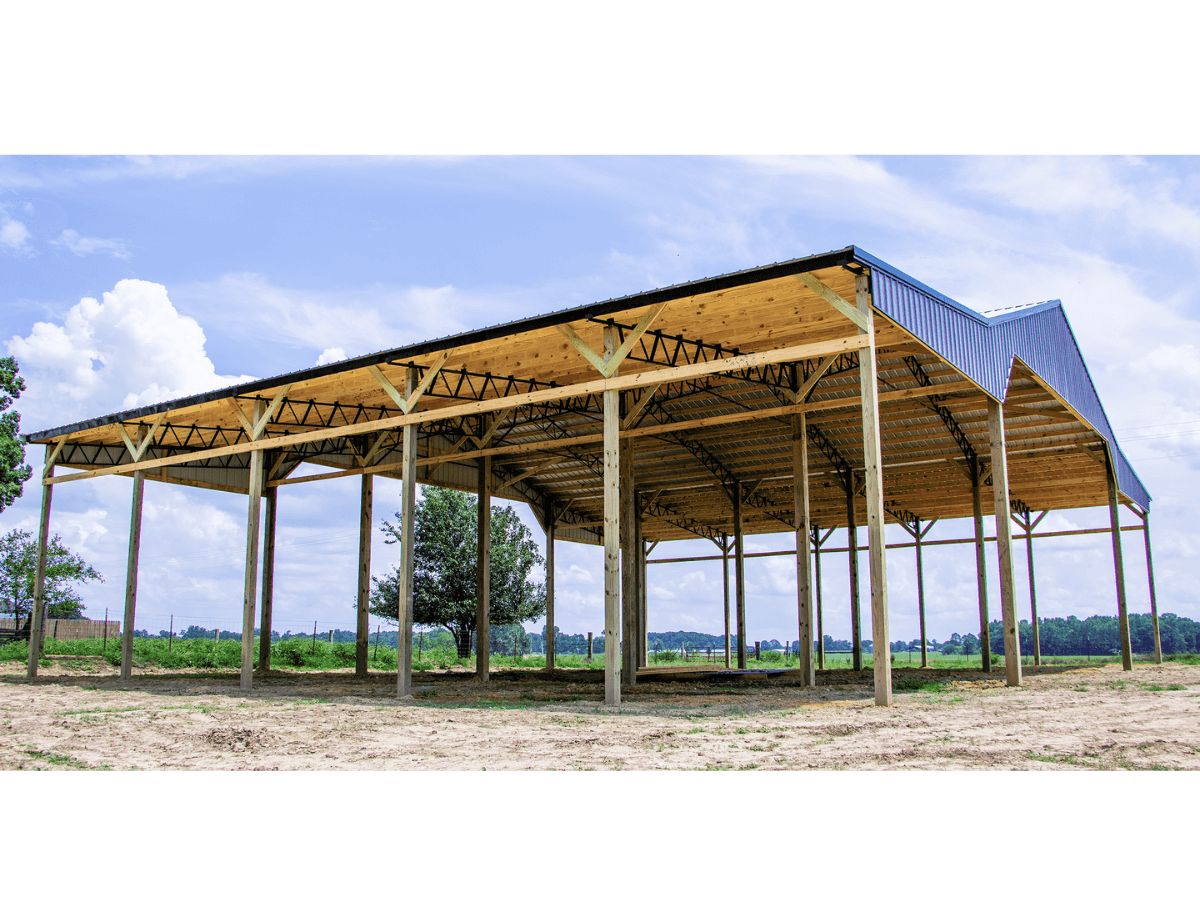How to Get Agriculture Financing for Hay Storage or Your Next Barn


September 3, 2024

Whether your farm is rapidly growing or you’ve been diligently working the fields for years on a generational property and your current barns are wearing the proof, there are multiple options to help you secure agriculture financing for a new a building. Agriculture financing can come from various sources, including banks, government programs, and private investors. Here’s a detailed guide to help you secure financing for your agricultural needs:
First things first, it’s important to determine exactly what you need. Look at your projected plans for growth and evaluate your financial situation to get an idea of the kind of building that will best suit your needs. You’ll want to prepare a budget and research reputable builders near you.
There are several different financing options available from traditional loans to government programs. You’ll want to look into each one to see if you and your building meets the eligibility requirements.
Many banks offer loans specifically designed for farmers and agribusiness. These can include term loans, operating loans, equipment loans, and real estate loans. Typically, collateral such as land or equipment is required.
Agriculture term loans are long-term loans designed for farm investments like livestock, equipment, land, and buildings. Secured by the assets they finance, these loans help farmers purchase, expand, or refinance operations with competitive rates and extended repayment periods. When applying, consider the loan’s purpose, amount needed, and any restrictions.
Short-term operating notes are quick loans tailored for farmers needing fast funds for essentials like seeds, fertilizer, livestock feed, or emergencies. Ideal for one to three years, these loans are based on the farm’s projected income. Repayment is usually monthly, covering both principal and interest, with potential renewal upon approval. Interest rates are typically a bit higher due to the shorter term.
Operating lines of credit are an important consideration for farmers, offering flexible, as-needed borrowing for daily operations. No need to apply for a loan every time—borrow, repay, and borrow again within your credit limit. This flexibility helps save on interest, as you only borrow what you need when you need it.
Looking to expand or acquire farmland? Agriculture Real Estate loans might be a good fit. These loans allow you to use the land’s value as collateral to secure funding for land purchases and improvements like fencing, new irrigation systems, or soil erosion control. Enjoy long repayment terms of up to 30 years, competitive interest rates, and flexible repayment schedules.
Running a farm requires the right equipment. Whether upgrading or adding to your inventory, a Farm Equipment Loan can help finance new or used machinery. Usually these loans have flexible repayment terms that can fit in your budget, with options to extend the period or pay off early to save on interest. Secured by the equipment itself, these loans often come with competitive rates. Plus, you might be eligible for tax deductions on your purchases, so check with your accountant!
In the U.S., the USDA offers several loan programs like Farm Service Agency (FSA) loans, including Direct Operating Loans, Microloans, and Farm Ownership Loans. Other countries have similar programs, such as the Canadian Agricultural Loans Act (CALA) Program in Canada, and various European Union funding programs. Some government programs provide subsidies or grants that don’t need to be repaid.
State | |
There are additional government programs run at the state level that might provide cost-sharing or reimbursements. For example, the Tennessee Agriculture Enhancement Program (TAEP) is a state-funded initiative designed to support Tennessee’s agricultural community by providing cost-share opportunities to farmers and producers. The program aims to increase farm profitability and promote agricultural sustainability through various projects and improvements. You’ll need to secure initial funding, but then, if approved, TAEP will reimburse you up to a certain amount depending on the type of building. If you’re not a Tennessee resident, you can research your individual state agricultural programs which might include additional financing opportunities.

Live in Tennessee?
The 2024-2025 TAEP application period is October 1-7th for cost-share funding!
Look into different agricultural cooperatives or agricultural associations. These groups represent the interests of farmers and agricultural stakeholders with benefits like market access, economies of scale, risk management, support, and other resources. Members usually have access to information and financing options that might not be available to individual farmers. These groups are also able to offer support in the application process.
You can also look into specialized finance companies which offer loans and leasing options tailored to the needs of farmers or you can put those networking skills to the test and explore opportunities to get funding from an angel investor or venture capitalist that may want to invest, though you’re more likely to get their investment for innovative agricultural projects, especially those involving technology or sustainable practices.
Depending on where you’re planning to secure agriculture financing for your next project, there might be a variety of documents you need to provide.
Most applications have strict guidelines and missing details could result in the difference between the sigh of relief you feel when it starts pouring down rain and your hay is under a protective building or the inset panic from staring at a pile of moldy clippings. Make sure you’re following the specific instructions, submitting all required documents before the deadline, and double-checking the information for accuracy and completeness.
After you submit your application, it’s super important to stay proactive and attentive. Make sure to follow up regularly to check on the status and quickly respond to any additional info requests to keep things moving smoothly. Be ready for potential interviews or site visits by having all your documents in order and a clear explanation of your project handy – this shows you’re prepared and committed. And once you get the funds, use them exactly as you outlined in your application to stay compliant and avoid any repayment issues. Staying engaged and organized will really boost your chances of a successful outcome. You’ve got this!
Live in Tennessee?
The 2024-2025 TAEP application period is October 1-7th for cost-share funding!

The Tennessee Agricultural Enhancement Program (TAEP) is a state-funded initiative designed to support and improve agricultural operations in Tennessee. Established in 2005, TAEP provides cost-share funds to farmers and producers for various projects aimed at enhancing farm profitability, efficiency, and sustainability. These projects can include improvements ...

If you’re looking for ways to fund your next agricultural building project, the Tennessee Agriculture Enhancement Program offers cost-share opportunities for farmers through their producer programs. There are several types of buildings you could get cost-sharing for from hay barns to commodity sheds, but there are some basic eligibility requirements for the TN TAEP program as well as each producer program...

If you’re looking for ways to fund your next agricultural building project, the Tennessee Agriculture Enhancement Program offers farmers opportunities to improve their operations through cost-share support for approved building projects. New infrastructure can enhance your farm’s productivity, the animal welfare, and overall efficiency. Here are the buildings that you can get under the different TAEP producer programs...